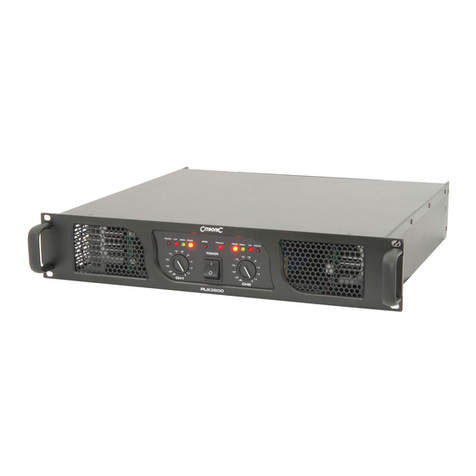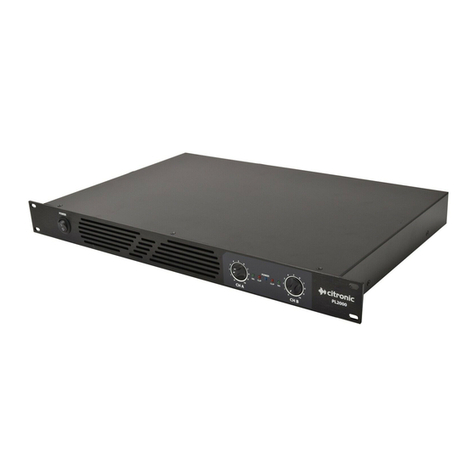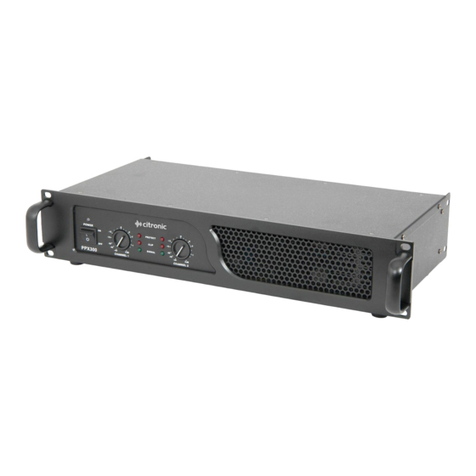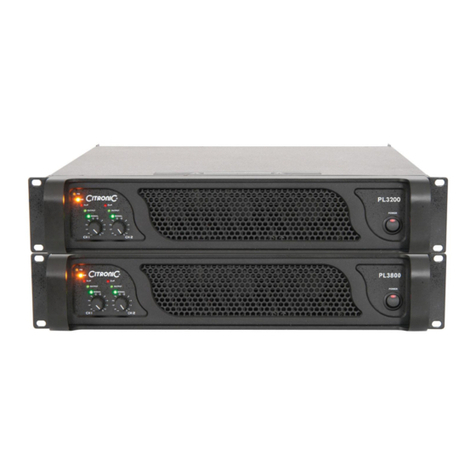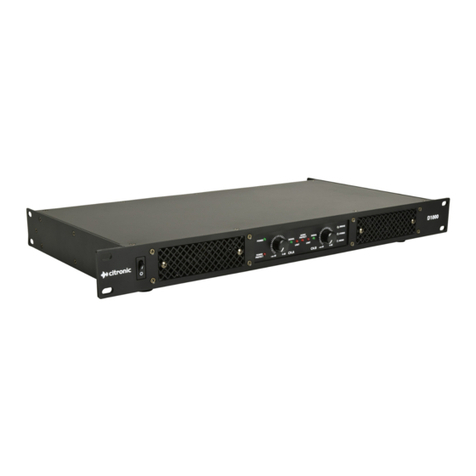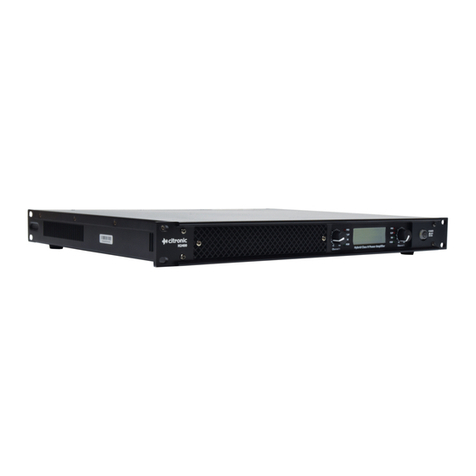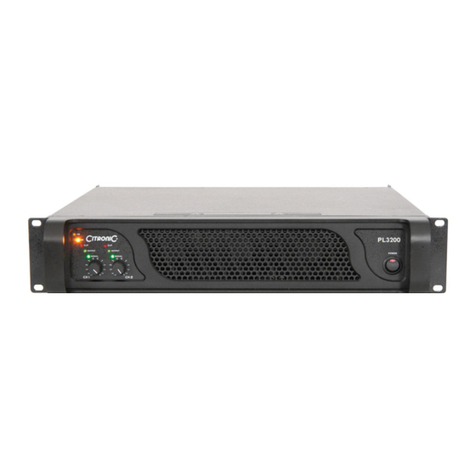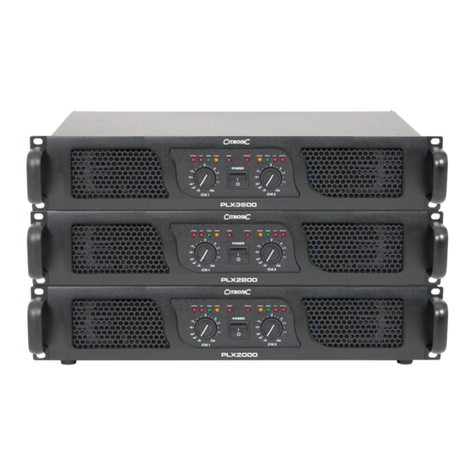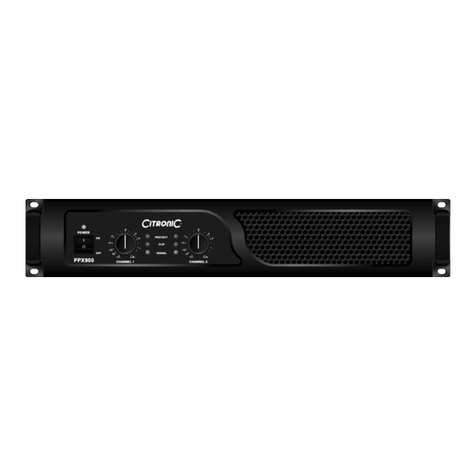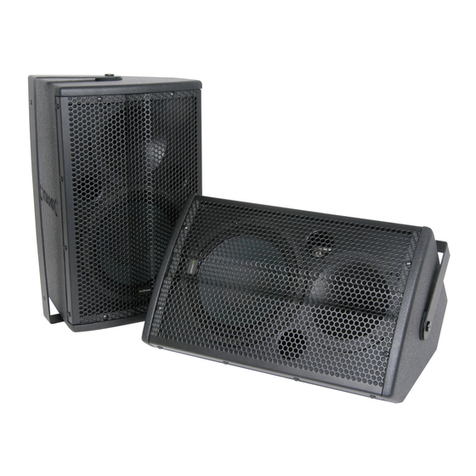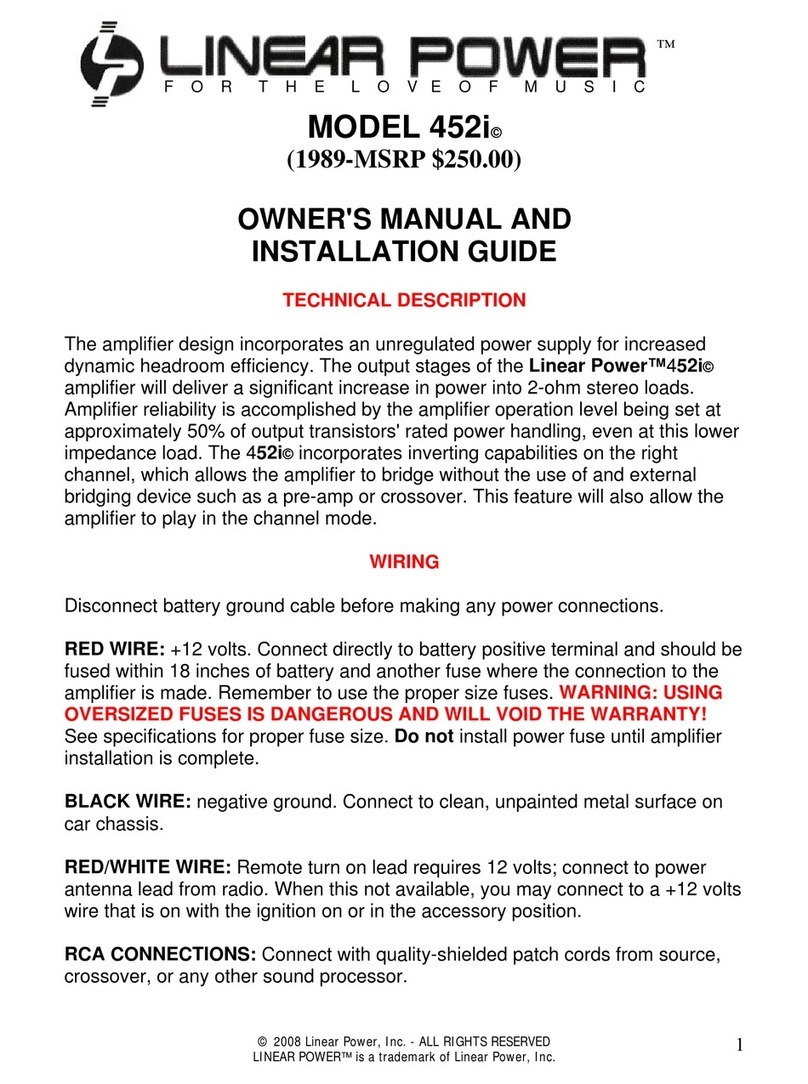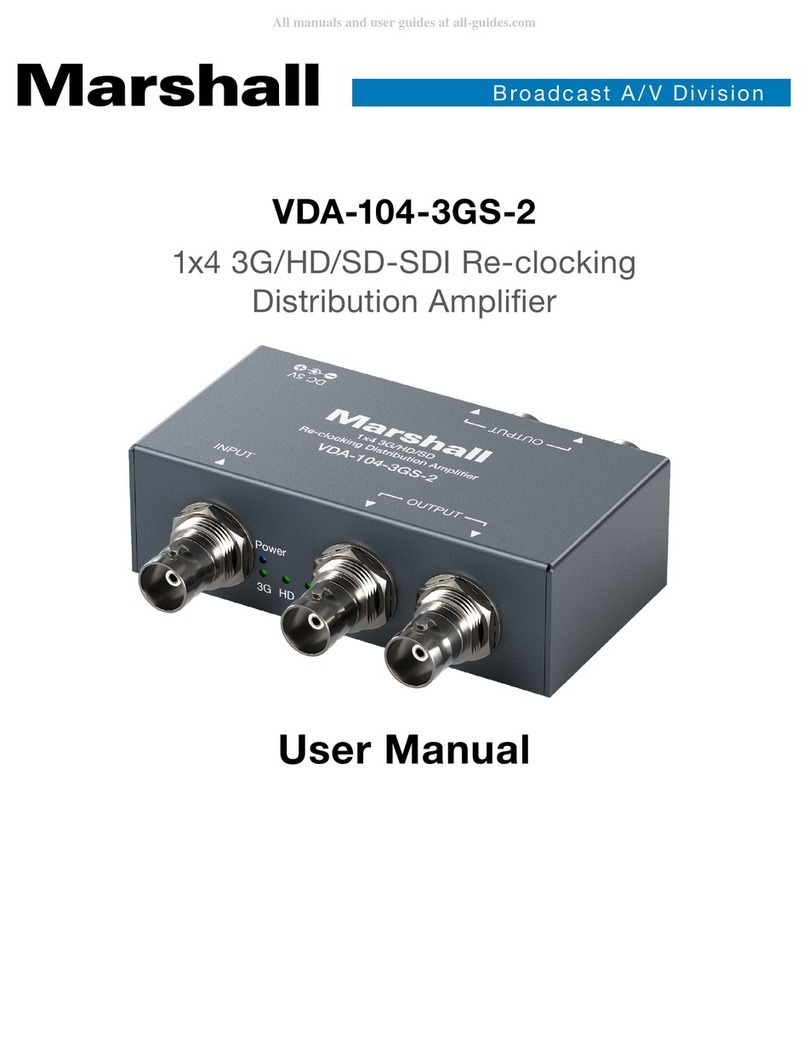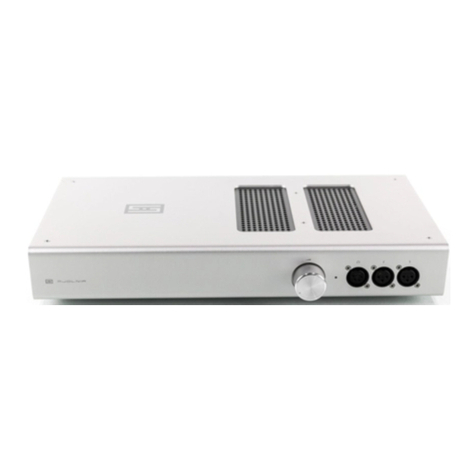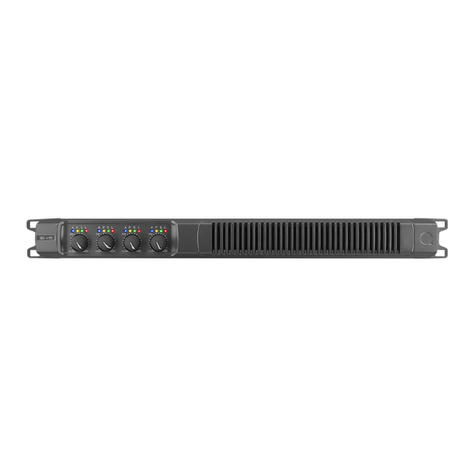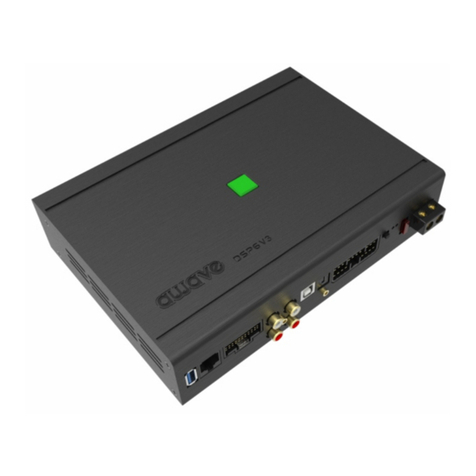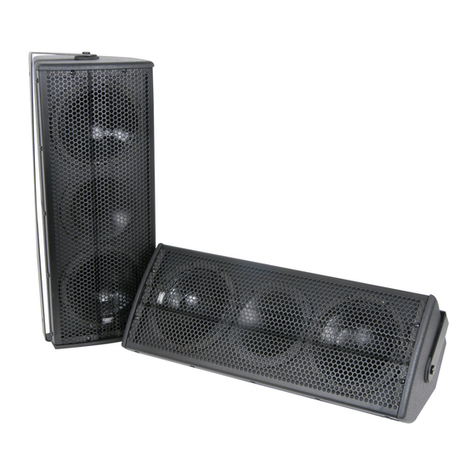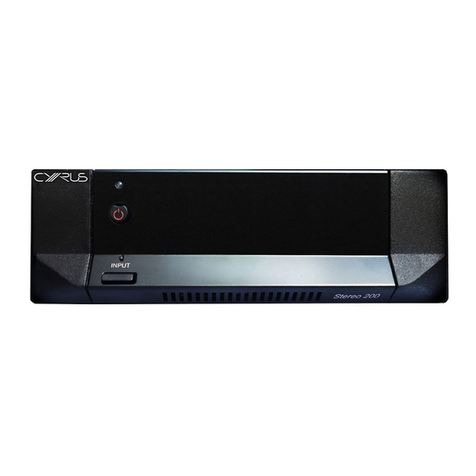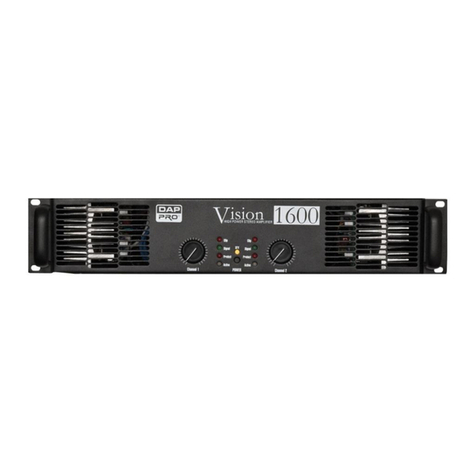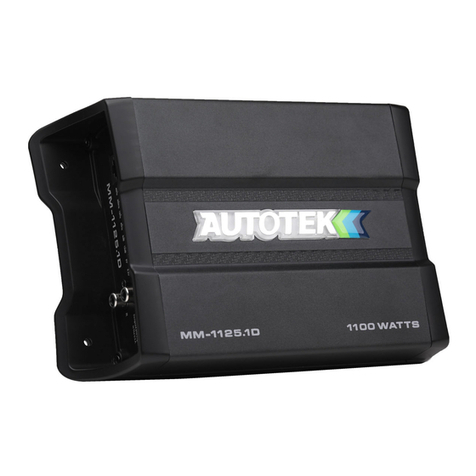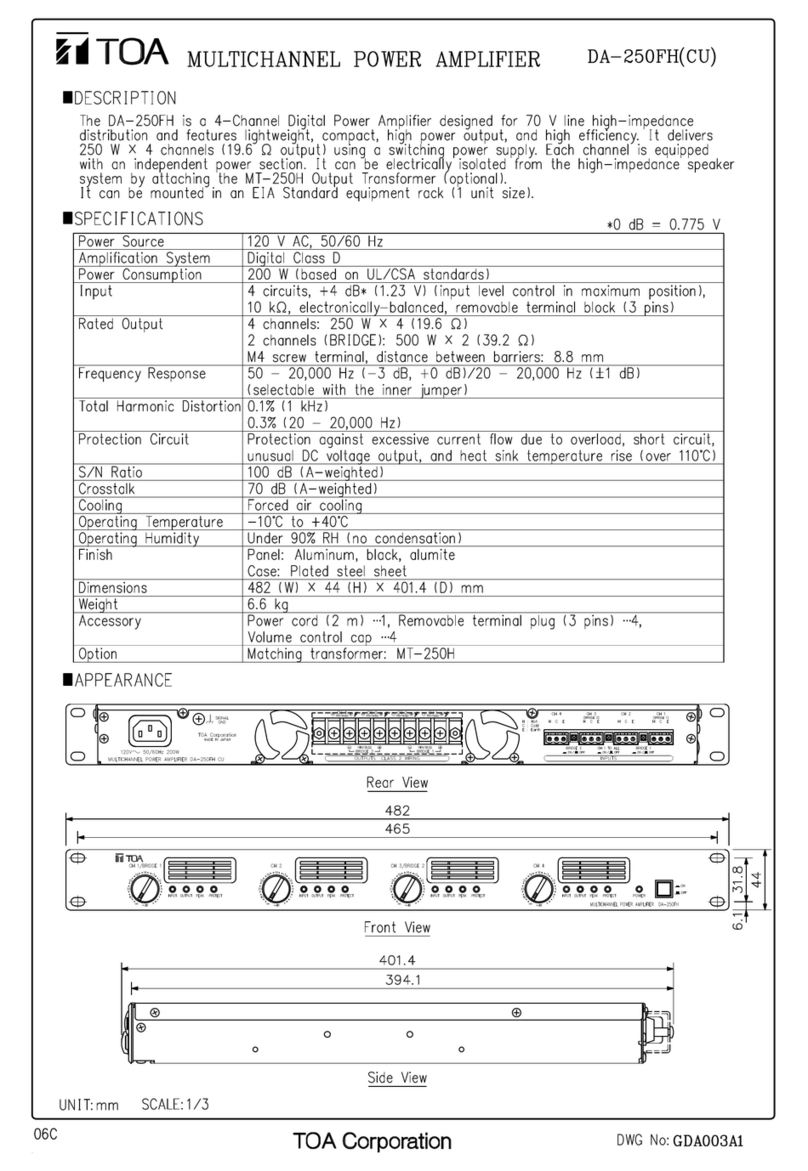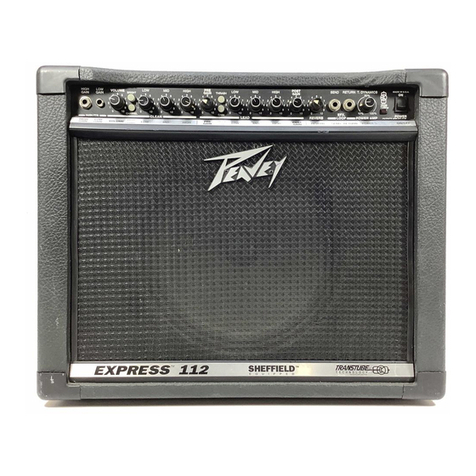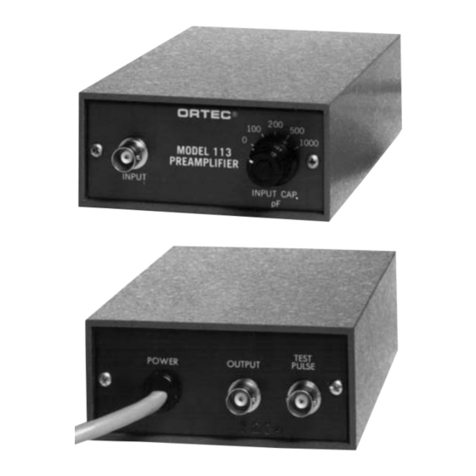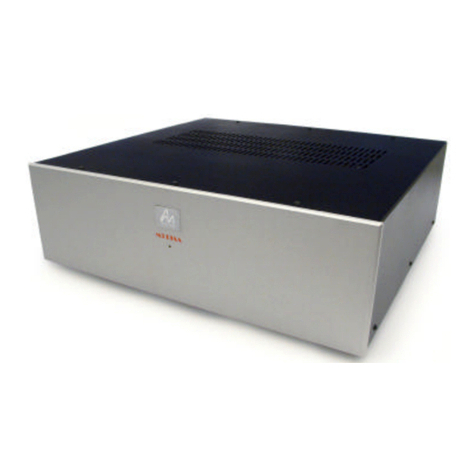D-series Amplifiers User Manual
Operation
Connect speaker cabinets to channel outputs (18, 20) using good quality Speakon®leads and ensure that the combined
load on each channel is no lower than 4Ω.
For speaker loads connected in parallel…1/speaker impedance + 1/speaker impedance…= 1/TOTAL impedance.
Therefore, for 2 x 8Ωspeakers…1/8+ 1/8= 1/4
(so the combined impedance is 4Ω)
The rear panel has a Mode switch (12), which determines the way that the amplifier operates, indicated by 3 LEDs on the
front panel (10). The standard operating mode is STR (stereo), with each input feeding its relevant speaker output.
PAR (parallel) mode sums both inputs together in mono so that each amplifier channel receives a mix of both inputs.
Also, both channels can be combined to drive a single load at higher power by selecting BRIDGE mode. In this mode,
the output is delivered to the Bridge speaker connecter (19) on the rear panel instead of the CH.A and CH.B connectors.
WARNING –The minimum load impedance for BRIDGE mode is 8Ω.
Above the Mode switch is a Sensitivity switch (11), which has 3 settings for different input levels.
The standard setting is 0.775V and settings for 1.0V and 1.44V are for higher level inputs, reducing the input sensitivity.
(0.775Vrms @ 0dB is standard line level)
The Low-Cut switch, when set to “75Hz”, (13) filters out the audio below 75Hz, reducing wasted power capacity where
the speakers cannot reproduce these low frequencies.
Alongside the Low-Cut switch is a Ground switch, which isolates the signal ground from the case earth when set to the
“LIFT”position. This can be useful in situations where there may be hum caused by ground loops. If this does not
improve any noise issues, it should be set to the “GND”position by default.
Connect audio signals from the mixer or other line level source to the XLR connectors (16) on the rear panel using good
quality screened signal leads. Depending on output level of the mixer, select the appropriate sensitivity on the rear panel.
Wiring for balanced or unbalanced inputs are as follows…
Each channel input also has a corresponding XLR line output (14) for linking onto further amplifiers if required.
Connect the amplifier to a mains supply (21), ensuring the IEC lead is earthed, in good condition and connected securely.
With Channel A + B controls (5, 9) turned fully down, switch on the power to the amplifier (1). This unit has a “soft-start”
function which makes some checks before engaging power to the amplifier circuitry, which may take a few seconds.
With an audio source playing into the amplifier, gradually increase the amplifier’s channel output level controls (5, 9) to
the required setting (normally full) and then gradually increase the signal level from the mixer or sound source until
sound can be heard through the speakers and then continue increasing up to the required level.
In normal operation, the Power LED (3) will be lit, and the Signal LEDs (6) will light when an input signal is present.
If the input signal is overloading the amplifier, the internal limiters will activate, indicated by the Limit LEDs (8).
If the limiter LEDs are lighting more than briefly on the loudest parts of the audio, it is advisable to reduce the input gain.
The D-series amplifiers also have inbuilt protection circuitry. In case of a power fault, the circuitry will shut down and the
Power Protect LED (4) will light. If there is a fault in the audio signal, the outputs will be muted, and the Audio Protect
LED (7) will light.
Before powering down, turn the channel gain controls fully down to avoid loud noises when switching off.
